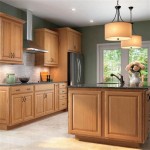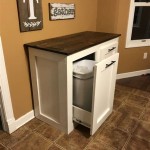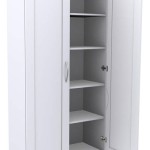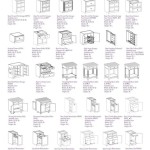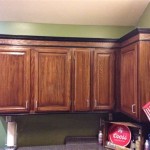16 Standard Cabinet Door Sizes References List In Excel
Creating or modifying a kitchen, bathroom, or any other room with cabinets often requires a thorough understanding of standard cabinet door sizes. These dimensions are crucial for ensuring a seamless fit, consistent look, and functional design. However, remembering all the various standard sizes can be challenging. This article provides a comprehensive list of 16 standard cabinet door sizes, compiled in a user-friendly Excel format, to simplify the process of choosing and ordering the right doors for your project.
Understanding Standard Cabinet Door Sizes
Standard cabinet door sizes are generally based on the width and height of the cabinet opening. They are typically measured in inches, and manufacturers often offer a variety of standard sizes to accommodate different cabinet styles and applications. These dimensions include the actual door size, which is the measurement of the door itself, as well as the rough opening, which is the measurement of the cabinet opening before the door is installed. It's essential to understand both measurements to ensure a proper fit.
Standard sizing provides numerous benefits, including:
- Ease of Ordering: When you choose a standard size, you can easily find pre-made doors from various manufacturers.
- Cost-Effectiveness: Standard sizes are often more affordable than custom-made doors due to economies of scale in production.
- Faster Installation: Pre-made doors are ready to be installed, eliminating the need for complex fitting, saving time and effort.
- Consistent Design: Using standard sizes ensures a uniform appearance across your cabinets, creating a visually cohesive look.
Key Points to Consider When Selecting Cabinet Door Sizes
While standard sizes offer many advantages, it's important to consider a few key factors when choosing cabinet door sizes to ensure they perfectly fit your needs.
1. Cabinet Type and Application
Different cabinet types and applications require specific sizes. For instance, base cabinets often have larger doors to accommodate larger items, while upper cabinets may have smaller doors for easier access. Consider the intended function of each cabinet when deciding on door sizes.
2. Existing Cabinet Openings
If you are replacing existing cabinet doors, you need to measure your current cabinet openings accurately. The rough opening should be slightly larger than the actual door size to allow for proper installation and clearance.
3. Door Styles and Features
Certain door styles, such as raised panels or inset doors, may impact the overall dimensions. You should consider these features when selecting standard sizes to ensure the chosen doors complement the desired style.
4. Functionality and Aesthetics
The chosen sizes should not only fit aesthetically but also provide easy access and functionality. For instance, you may choose a slightly smaller door in a cramped space to ensure easier opening, especially when loaded with heavy items.
5. Manufacturer's Recommendations
Always consult the manufacturer's recommendations for specific door sizes. They may provide a guideline for standard sizes suitable for their cabinet models or offer a sizing chart for different applications.
The Importance of an Excel Spreadsheet
An Excel spreadsheet is a valuable tool for organizing and managing standard cabinet door sizes. It provides a centralized location for referencing all the common dimensions, making it easier to select the right sizes for your project. You can create columns for different sizes, including width, height, material, style, and even pricing information. This organized format ensures quick access and accurate selection, streamlining the cabinet door ordering process.
Sample Excel Spreadsheet of 16 Standard Cabinet Door Sizes
Here's a sample Excel spreadsheet with 16 standard cabinet door sizes, categorized by type. You can download and customize this template to suit your specific needs.
Sheet Name: Cabinet Door Sizes
|Door Type
|Width (in)
|Height (in)
| |---|---|---| | Base Cabinet | 18 | 36 | | Base Cabinet | 24 | 36 | | Base Cabinet | 30 | 36 | | Base Cabinet | 36 | 36 | | Tall Cabinet | 18 | 42 | | Tall Cabinet | 24 | 42 | | Tall Cabinet | 30 | 42 | | Tall Cabinet | 36 | 42 | | Upper Cabinet | 12 | 30 | | Upper Cabinet | 15 | 30 | | Upper Cabinet | 18 | 30 | | Upper Cabinet | 24 | 30 | | Vanity Cabinet | 18 | 30 | | Vanity Cabinet | 24 | 30 | | Corner Cabinet | 18 | 36 | | Drawer Base | 15 | 36 |This sample spreadsheet provides a starting point. You can add more rows for additional sizes, modify the existing data, and include additional columns for other relevant information, such as manufacturers, pricing, or specific door styles.

Release Notes Cabbuilder Cut List Cabinet Design

Structural Report Spreadsheet Tool

Project Revision And Issue History Worksheets

Release Notes Cabbuilder Cut List Cabinet Design

141 Free Excel Templates And Spreadsheets Myexcel

To Populate Values Cobie Spreadsheet

Select Drop Down Item And Use Vlookup To Return Multiple Attributes Excel University

What Are The Csi 16 Divisions Of Work Planning Engineer Fze

20 Free Excel Construction Templates Projectmanager

Daily Walk Victory Church
Related Posts



